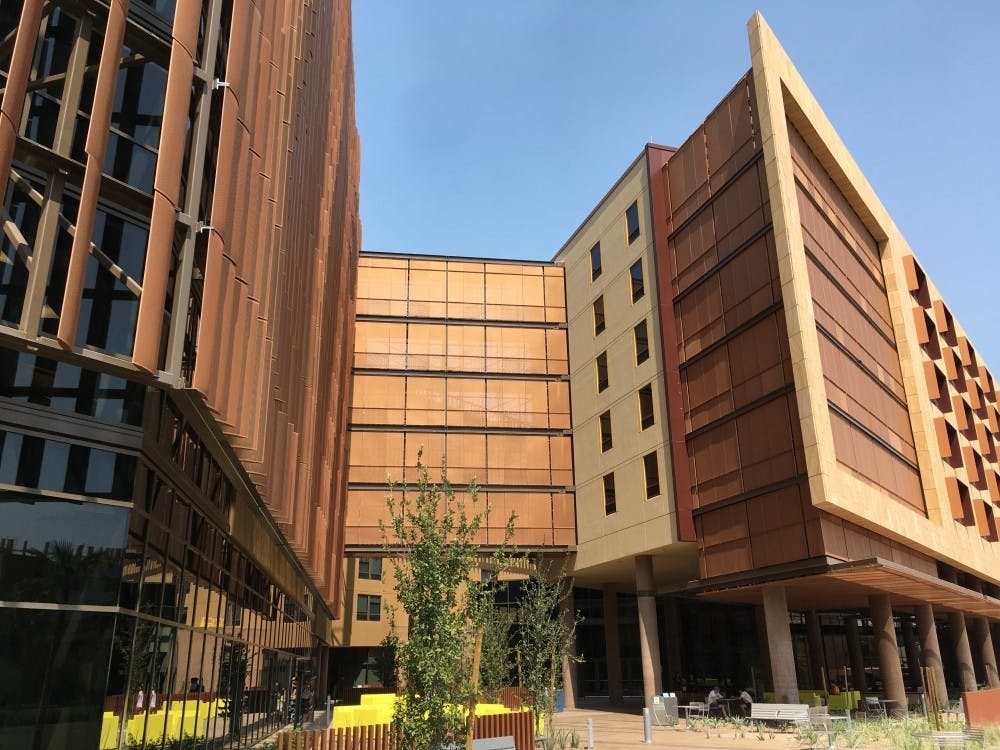ASU recently told Tooker House residents through email that it would charge “the whole building” for damages totaling around $10,000 if it cannot find the individual culprits. This is a gross example of ASU, which has historically neglected its dorm buildings, using its power to demand students pay for damages that pale in comparison to problems the University itself has neglected to fix.
A written statement to The State Press from ASU spokesperson Gaby Kemp said, "When students sign their license agreement with ASU, they agree to abide by the policies of ASU and University Housing. One of those policies ... outlines that students in the community may be charged for damages to the community."
“I don’t believe it’s fair, because I haven’t been vandalizing buildings. I haven’t been doing anything toward (the residence) in a negative way to affect it,” said Trey Hofmann, a Tooker House resident and a freshman studying mechanical engineering.
Tooker House residents should not have to collectively pay for damages to the dorm building, and ASU students and residents should demand that the University stop acting like an all-powerful landlord that cares more about its bottom line than community health.
READ MORE: ASU needs to do more to keep students safe in the dorms
“I clean up once a week and I’ve never vandalized anything, so why do I have to pay for other people’s mistakes?” Hofmann said.
According to the email, the damages include "exit signs being torn down or destroyed, ceiling damage, light covers being removed from lighting, and signage missing in the residential space," as well as trash and spills left throughout the building.
The email then ends with a reminder to residents: "Please remember that not only are YOU a representation of yourselves and YOUR community, YOU are representation of Tooker House and The Fulton Schools of Engineers. Please remember to respect yourselves, each other, and the items in your community, as this is our HOME."
The situation would be different if ASU had no resources to fix this problem, but the school certainly does. There are many resource pools that ASU could pull from to fix dorm damages and invest in preventative efforts to discourage further vandalism.
For one, ASU’s endowment has topped $1.25 billion, according to a press release from this March. The report does not include student housing as an endowment priority. ASU should go to endowment investors that control their donations and make clear that student housing needs to be prioritized.
Outside of its endowment, ASU invests millions of dollars in its revenue-generating sports programs, such as football and basketball. ASU is expected to pay out about $4.4 million to its former head football coach, Herm Edwards, through 2024.
It cannot be emphasized enough that Edwards has no role to play with the football team anymore, and the University is paying him millions of dollars while students are told they have to collectively pay for “10k+” in dorm damages. It is outrageous.
That’s not to mention ASU President Michael Crow’s own salary, which sits at $771,282. If Crow were to make what an average faculty member at the University makes, which is $123,300, that would free up nearly $650,000 for other expenses, such as dorm damages and general student well-being.
If Crow were a compassionate leader of the University, he would be willing to take the salary hit. He still is, after all, the chairman of the board of the CIA’s venture capital firm; that paycheck, according to reporting from the Phoenix Business Journal, would likely be enough to cushion a much smaller base salary.
Unfortunately, it seems that Crow and the University are not receptive to their students, and this is not a new phenomenon. ASU has been accused of neglecting its dorm buildings by the ASU community after mold was suspected in Vista del Sol, Palo Verde West and Hassayampa. ASU denied those allegations and refused to do anything about them.

Aaron Stigile is an opinion columnist at The State Press. He previously wrote for The Defiant Movement and is working toward a bachelor’s degree in Journalism and Mass Communication. He is also working toward a minor in Spanish and a certificate in Cross-Sector Leadership.




